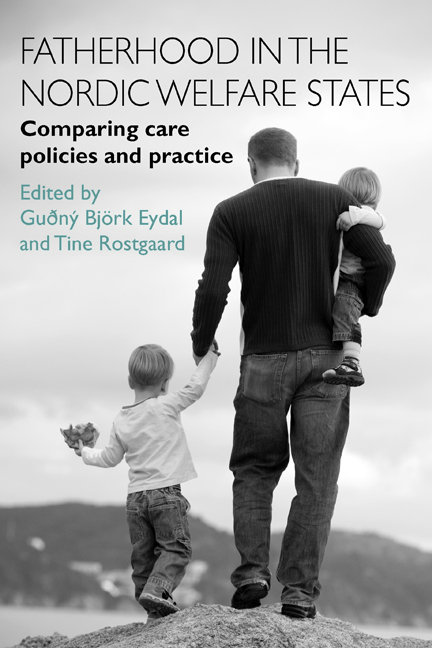Book contents
- Frontmatter
- Contents
- List of tables and figures
- Notes on contributors
- Acknowledgements
- one Introduction
- Theme 1 Fathers, families and family policies
- Theme 2 Fathers in everyday life – culture, work and care
- Theme 3 Constructing fatherhood in different family settings
- Theme 4 Caring fathers and paid parental leave policies
- Theme 5 International reflections on findings
- Conclusions
- Index
fourteen - Policy goals and obstacles for fathers’ parental leave in Finland
Published online by Cambridge University Press: 04 March 2022
- Frontmatter
- Contents
- List of tables and figures
- Notes on contributors
- Acknowledgements
- one Introduction
- Theme 1 Fathers, families and family policies
- Theme 2 Fathers in everyday life – culture, work and care
- Theme 3 Constructing fatherhood in different family settings
- Theme 4 Caring fathers and paid parental leave policies
- Theme 5 International reflections on findings
- Conclusions
- Index
Summary
Introduction
In Finland, as in all of the other Nordic countries, the improvement of gender equality has been one of the primary objectives of parental leave policy. Supporting working motherhood and emphasising caring fatherhood are the two sides of this endeavour (Ellingsater and Leira, 2006). In recent decades, Finnish leave policy has also thus aimed to achieve a more equal sharing of parental leave by encouraging fathers to take more leave.
Despite this longstanding goal and policy redesign, Finnish fathers’ take-up of parental leave has increased slowly compared to the other Nordic countries (see Chapters Six, Thirteen, Fifteen and Sixteen, this volume). In 2012, Finnish fathers took only 9 per cent of all parental benefit days. In this chapter, the focus is on the obstacles to a more equal sharing of parental leave in Finland: why do more fathers not take more parental leave?
The obstacles to more active leave take-up among fathers have generally been located as family finances, pressures of work and the tradition of a gendered division of labour (see Brandth and Kvande, 2006, 2012; see also Chapters One and Six, this volume). This chapter deals with these dimensions, but the main focus is on the policy process, on its role in the construction of leave schemes, and in the framing of fathers’ use of parental leave. In Finland, leave policy development is part of a special working life policy design in which labour market partners have played a significant role over the past 40 years (Lammi-Taskula and Takala, 2009; Alaja, 2011). Central employer and employee organisations are involved in decisions concerning incomes and social benefits as well as working hours and work–family reconciliation. The state has often taken the initiative, but the actual negotiations have taken place in tripartite groups consisting of central employer and employee organisations and the government. Practically no parental leave legislation has been introduced without a unanimous decision in these tripartite negotiations.
In this chapter, the development of fathers’ leave take-up is analysed as an issue of choice and change. The analysis is based on a combination of policy evaluation and survey data.
- Type
- Chapter
- Information
- Fatherhood in the Nordic Welfare StatesComparing Care Policies and Practice, pp. 303 - 324Publisher: Bristol University PressPrint publication year: 2014



